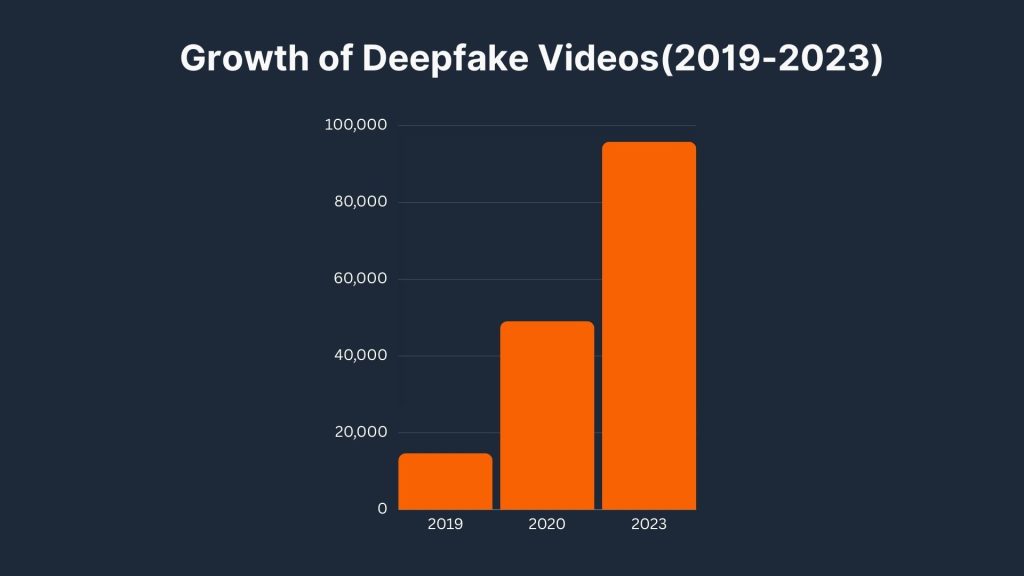Deepfake video must be regulated
The rise of deepfake technology presents a serious threat to the foundation of truth in our society especially in a time when technological advancements are reshaping how information is spread across the world. The growth rate of deepfake videos from its inception have been exponential . Failing to establish regulatory grounds at the present could potentially contribute to the growth of such content. The unchecked spread of deepfake audio and video recordings enables bad actors to produce extremely realistic fake content, contributing to the already widespread problem of disinformation. The blurring of boundaries between reality and fabrication raises concerns about the potential damage to trust in visual media, which emphasises the need for strict regulations to limit the potentially disastrous effects of unchecked deepfake technology. With the use deepfake technology , fraudulent people or organisations can produce videos and audio recordings that look real and feature real people saying or doing things they never would have. Such deception has a profound impact on politics, business, and interpersonal relationships in addition to being entertaining or prankish.
The “2023 State of Deepfakes” report by homesecurityheroes provides a comprehensive analysis of the current state of deepfake technology, based on a study of 95,820 deepfake videos, 85 dedicated channels across various online platforms, and over 100 websites connected to the deepfake ecosystem. The report states that the number of deepfake videos online in 2023 is 95,820, marking a 550% increase from 2019

The potential for unregulated deepfake technology threaten trust in visual and auditory media. The ability to manipulate and distort reality through sophisticated digital means is a dangerous weapon in a world where information is the currency of power. Deepfakes can be used to fake speeches, interviews, or declarations made by public figures. This can result in the spread of false narratives that have the power to sway public opinion and have an impact on important decision-making processes. Let’s look at some of the deepfake controversies that happened recently.
Taylor swift
On January 24, 2024, non-consensual, sexually explicit deepfakes of Taylor Swift went viral on X. In just 19 hours, the account that posted the photographs received over 260,000 likes and over 27 million views
before being suspended.
Tom Hanks
According to recent reports, a dental plan advertiser used a deepfake video with actor Tom Hanks without Hanks’s permission. Hanks used Instagram to respond to this AI-generated video, educating his followers and distancing himself from the unauthorised use of his likeness.
NR Narayana Murthy
On Facebook, a deepfake video appearing to be of Infosys founder N R Narayana Murthy is being circulated. In the fake video, he talks about the advantages of software for quantum computing that has allegedly been created by his team. According to the video, stock market investors can use the technology to make almost INR 2.50 lakh on their first day of use. however, this video has been marked as fraudulent.
These controversies gives us a glimpse of the damage deepfake videos can have on the society. Furthermore, think about the ramifications if a deepfake video shows a prominent figure in politics criticising a policy or voicing strong opinions. If such information is produced well, it has the potential to cause social instability, provoke public outrage, and even influence elections. The political process is made much more susceptible to manipulation which could drive communities to make misinformed decisions.
The article titled “Fooled twice: People cannot detect deepfakes but think they can” extensively gives us an understanding on how people tend to overestimate their ability to determine if the content is authentic or fake. Which is an extremely concerning finding as this highlights how people would be not be aware even when they are misinformed. Thereby implementing regulations seems to be the right step in moving forward with this issue.
Implementing regulations for deepfake creation requires a multi-faceted approach. First and foremost, it is the duty of platforms and social media networks to identify and report deepfake content. It should be a top priority to design and implement cutting-edge algorithms that can recognise altered media. Second, in order is to hold people accountable for producing and disseminating harmful deepfake content, legal frameworks must be put in place. A deterrent will be provided by explicit guidelines that clearly define the consequences for people who exploit someone else’s likeness without permission or manipulate media in an untruthful way. Furthermore, programmes for education and awareness are essential for minimising the effects of deepfakes. Through raising public awareness of this technology’s presence and possible effects, people can learn to be more discriminating media consumers.
Critics may argue that regulating deepfake technology infringes upon the freedom of expression and artistic creativity. Though these concerns are legitimate, the possibility of serious damage outweighs the freedom of a person to produce misleading content that may have real-world repercussions. It is crucial to strike a balance between the right to free speech and the necessity to defend people and society against bad actors that take advantage of deepfake technology.
The power deepfake videos have in society must not be seen lightly. Deepfake videos can be exploited in a plethora of ways from pornographic images to stock market manipulation. It is imperative to address the ethical, legal, and societal implications associated with these deepfake content . Failing to do so at the earliest could cause certain unpredictable detrimental effects in the society.


